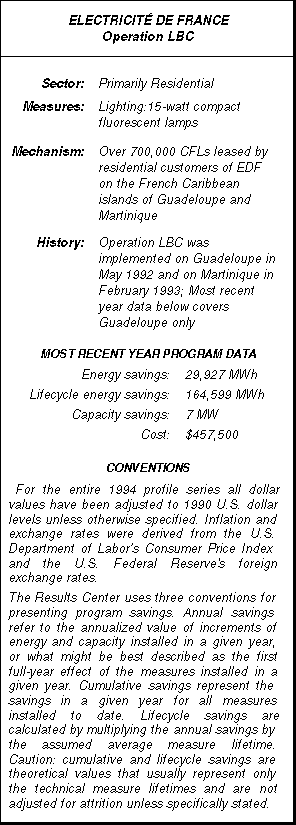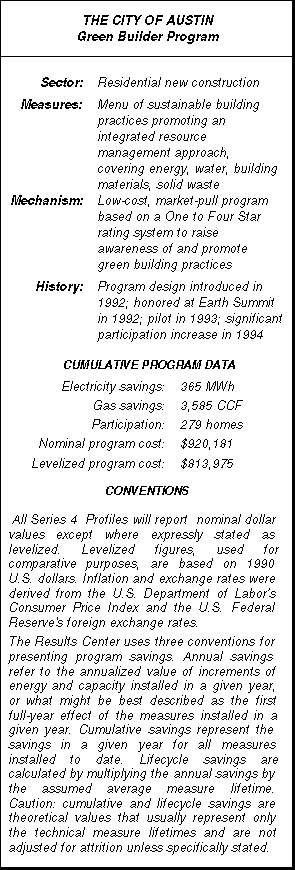EXECUTIVE SUMMARY
 The City of Phoenix’s Energy Management program for its municipal facilities is one of the best kept efficiency secrets in the United States. Years ago, Phoenix officials became aware of the fact that if the City’s energy bills were treated as a single expense, energy would be the City’s largest budget item after payroll. This provided the initial impetus for efficiency in Phoenix. Now its success story -- 16 years in the making -- has proceeded with little fanfare or accolades, but has provided $18 million in net repayments to the City’s General Fund.
The City of Phoenix’s Energy Management program for its municipal facilities is one of the best kept efficiency secrets in the United States. Years ago, Phoenix officials became aware of the fact that if the City’s energy bills were treated as a single expense, energy would be the City’s largest budget item after payroll. This provided the initial impetus for efficiency in Phoenix. Now its success story -- 16 years in the making -- has proceeded with little fanfare or accolades, but has provided $18 million in net repayments to the City’s General Fund.
Phoenix has some 300 buildings including an airport, water and waste water treatment plants, downtown office facilities, libraries, fire and police stations, and public works maintenance service centers. To date, nearly 1,000 projects have taken place from small lighting retrofits to the construction of a 600,000 square foot, $84 million New City Hall which embodies state-of-the-art design and which is a showcase of energy-efficient equipment. The Energy Management program has been part of the Public Works Department and thus integrally tied to the City’s Facilities Management department. This, its staff assert, has been a key ingredient to its success as Phoenix has taken a pragmatic orientation to efficiency, tying facilities managers’ functions with energy management and thus providing durable savings through increased awareness of efficiency’s interface with both day-to-day operations and longer-term equipment replacements and capital improvements.
The savings reinvestment mechanism established in Phoenix has also been an important factor in Phoenix’s success. Each year a portion of documented energy savings are reinvested in further energy efficiency improvements, providing a means for leveraging greater and greater energy savings. To date $4.4 million (20% of the total savings) has been reinvested, resulting in direct and accountable savings of $22.8 million. Furthermore, the entire program was bootstrapped with virtually no capital outlays. Early program retrofits employed no- and low-cost measures and provided demonstrable results that laid a solid foundation for ever-more sophisticated efforts.
The core of Phoenix’s success with energy management has been the existence and influence of its Energy Management Team. The team of professionals that has been devoted to the rational use of energy has created an effect in Phoenix well worthy of replication around the world. Through its concentration on energy efficiency -- from routine, relatively simple measures to highly sophisticated measures such as district cooling and direct digital control of buildings -- the focus on energy management has resulted in both direct and indirect savings that bolster Phoenix’s overall resource efficiency and exemplary city management.
[CLICK HERE TO DOWNLOAD THE ENTIRE 19 PAGE PROFILE IN PDF FILE FORMAT]
This profile was produced by 

 The focus of this profile is the largest compact fluorescent lightbulb leasing effort ever undertaken by a utility, Operation LBC (Lampe Basse Consommation which means low consumption bulb). Implemented jointly by Electricité de France (EDF) and ADEME (Agencie de l’Environment et de la Maîtrise de l’Energie or the French Environment and Energy Management Agency), Operation LBC sought to lower evening peak demand on the Caribbean islands of Guadeloupe and Martinique by cutting the demand for lighting. The programs’s success caught both EDF and ADEME by surprise.
The focus of this profile is the largest compact fluorescent lightbulb leasing effort ever undertaken by a utility, Operation LBC (Lampe Basse Consommation which means low consumption bulb). Implemented jointly by Electricité de France (EDF) and ADEME (Agencie de l’Environment et de la Maîtrise de l’Energie or the French Environment and Energy Management Agency), Operation LBC sought to lower evening peak demand on the Caribbean islands of Guadeloupe and Martinique by cutting the demand for lighting. The programs’s success caught both EDF and ADEME by surprise. Southwestern Electric Cooperative (SWEC or the Co-op) is a small distribution company located in Illinois that like many other cooperatives has been losing market share for residential space heating to natural gas, a situation that has resulted in revenue loss for the Co-op. While gas is thermodynamically more efficient than resistance electric heating, SWEC devised a clever means of providing its members with a win-win solution by promoting ground source heat pumps, an even more efficient technology than gas from a source-BTU standpoint. By doing so, SWEC has been able to save its members money while maintaining its market share and thus revenue stream to keep its rates low and level of service high.
Southwestern Electric Cooperative (SWEC or the Co-op) is a small distribution company located in Illinois that like many other cooperatives has been losing market share for residential space heating to natural gas, a situation that has resulted in revenue loss for the Co-op. While gas is thermodynamically more efficient than resistance electric heating, SWEC devised a clever means of providing its members with a win-win solution by promoting ground source heat pumps, an even more efficient technology than gas from a source-BTU standpoint. By doing so, SWEC has been able to save its members money while maintaining its market share and thus revenue stream to keep its rates low and level of service high. The City of Austin, Texas is home to one of the most progressive efficiency programs in the world. The Green Builder program pushes the envelope of energy efficiency program designs to encompass parallel emphases on water efficiency, waste management, and use of "green" building materials. Using a clever market-pull mechanism to foster an integrated resource management approach to new residential construction, Austin has not only begun to transform its own "shelter industry" but has been internationally acclaimed as a model for sustainable development.
The City of Austin, Texas is home to one of the most progressive efficiency programs in the world. The Green Builder program pushes the envelope of energy efficiency program designs to encompass parallel emphases on water efficiency, waste management, and use of "green" building materials. Using a clever market-pull mechanism to foster an integrated resource management approach to new residential construction, Austin has not only begun to transform its own "shelter industry" but has been internationally acclaimed as a model for sustainable development.